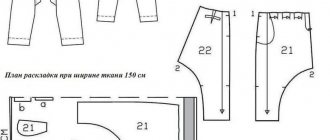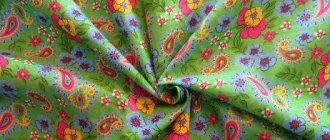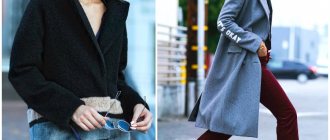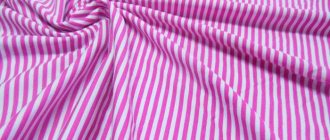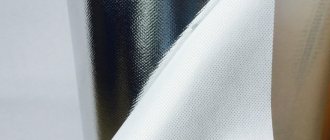History and features
The appearance of Ukrainian folk costume reflects the mentality of the country. Freedom-loving people who could not come to terms with the established rules and wanted to live separately developed their own unique style. Of course, people did not create a bicycle. They took advantage of the knowledge and skills of those who lived in Kievan Rus. But unlike their neighbors, the Ukrainians made the costume looser and brighter. And also the Ukrainian folk costume, the photo of which you can see above, is distinguished by its multi-layered and complex nature. That is, one part of the outfit complements the other. For example, a woman's undershirt peeks out from under her skirt, which creates a dissonance in the density of the material. This technique looks interesting and non-trivial. The history of Ukrainian folk costume dates back to the time of the Scythians. But people developed their own unique and inimitable style in the 16th century. The style has changed over time. The Cossacks had a great influence on fashion. These fugitive peasants wanted to be different from the farmers, they created their own colorful outfit, which gave fashion a new twist. By the 19th century Ukrainians are adopting the style of city dwellers, and fashion is changing everywhere. Foreign fashion designers have a great influence on people's taste. In fact, this situation in the country continues to this day.
What were clothes made from?
People made Ukrainian folk costumes from natural fabrics. Homespun fabric was most often used. It was woven from hemp or linen threads. The result was a coarse fabric that was suitable for making shirts. Men wore such clothes. When the fabric was worn out and became soft from constant washing, it was used to make women's clothing. Well, after the canvas became completely soft, children's shirts were sewn from it. Pants in Ukraine, as well as in Rus', were made of wool or cloth. The first option was suitable for winter, and the second - for summer. This fabric was used once and only for the manufacture of men's pants. Women sewed ponevas and skirts from woolen fabric.
The Ukrainian folk costume, the photo of which you can see above, also consisted of shoes and hats. Hats were made from fur. Shoes were made from rawhide. Bast shoes were used less often. But still, in Ukraine, people more often wore boots, although they were a luxury item.
Decorative jewelry was made from glass and natural stone. But more often they used glass, since it was cheaper. Often girls decorated their hats with fresh flowers. Almost all girls wore wreaths on holidays.
Ukrainian national costume
At all times, traditional clothing best illustrated the culture, habits and characteristics of the people. Ukrainian national costume is no exception - every bright detail of the rich palette demonstrates the rich and persistent spirit of a country with a long and difficult history. What did the boys and girls wear?
Traditional Ukrainian costume is similar to the clothing of other Eastern European peoples. The basis is a shirt made of hemp or linen, which is tucked into cloth or canvas pants. The upper cut of the shirt - the bosom - is certainly decorated with embroidery. Strict geometric patterns stand out against the white canvas and symbolize courage and courage. Often a man's suit was decorated with embroidery with an oak leaf - a powerful amulet of the family. The collar can be stand-up, turn-down, or absent altogether. The lower part of the suit - trousers - is secured to the belt with a cord. Wide pants of a burning red or bright blue color resemble a bag in appearance - this style is convenient both for agricultural work and for performing a dashing hopak. A cloth made of rectangular pieces of fabric is sewn between the legs - thus enhancing the visual resemblance to a bag. Some ethnic groups decorate the lower edge of the trousers - for example, among the Hutsuls it was customary to decorate them with green or yellow embroidery.
Women's Ukrainian national costume is much brighter and more intricate than men's. The girls sported koszuls - long shirts with embroidery along the neckline and on the sleeves. An everyday shirt was made from coarse cloth, but on holidays, the outfits of Ukrainian women were distinguished by a riot of colors on a snow-white silk background.
Girls wore koszuls without outer clothing, girded with ribbons or sashes. Married women always complemented their outfit with a zhupan - a sleeveless jacket and an outer garment, for example, a derga gathered in large folds at the back. The bottom was a ponyova - a long colorful skirt with an embroidered apron. The festive version - plakhta - was sewn from silk or brocade, complemented by unique patterns.
How to dye clothes
Ukrainian folk costume is distinguished by rich decor. But in order to dye the threads, special skill and suitable dyeing components were needed. Since the chemical industry began to produce its results very late, people made do with what they could collect in the vicinity of their farm. Therefore, most often all kinds of grass were used as paint. Women collected herbs, dried them, and then made a decoction. This way it was possible to boil down the green pigment. How did you make the red one? Unlike the traditions that existed in Rus', Ukrainian women extracted bright color from an insect called a scale insect. It was found in moss or on bushes. Often, it was not the insects themselves that were collected, but their larvae. Then it was necessary to wait until they hatched and boil, or rather bake, the scale insects with water in the oven. Such paint was simmered on fire for a day, and only then was it suitable for painting. Since the required insect was difficult to collect and cook, the red pigment was very valuable. They only dyed yarn and belts, and not the finished shirt fabric. Tree bark and all kinds of flowers were used to create other pigments.
Color spectrum
The color red predominated in the national costume. It was worn by all classes from farmers and artisans to the clergy. By the color saturation one could understand to which class a person belongs. But not only open red was used, but also its shades. Raspberry, brick and poppy were popular. The second most popular color in Ukrainian folk costume was yellow. They used shades such as lemon, sand, red and sand. Black color was rarely used. It was replaced with smoky, that is, gray. If it was necessary to darken some part of the pattern, brown was introduced. Green shades can also be seen in embroidery. Both dark and light colors were used.
Gold threads occupied a special place in the decor of clothing. They used them to embroider patterns on silk fabrics. But such outfits were not readily available. Gold and silver embroidery decorated the costumes of rich ladies, as well as the robes of members of the clergy. Multi-colored translucent beads were the main decorative elements. And the mother-of-pearl color was considered a symbol of luxury no less than the shine of noble metals.
Where to buy or rent?
Today, the national costume of Ukraine (men's, women's or children's) can be bought or rented in specialized stores or agencies. This outfit will make you stand out at any event, be it a wedding performance or a carnival party. A children's set is an original solution for a matinee in kindergarten or a school holiday. Your child is guaranteed to be the center of everyone's attention.
An exquisite evening dress in Ukrainian style that will decorate any special event. The straight, slightly fitted silhouette is complemented by luxurious wide sleeves gathered at the wrist. Beautiful floral embroidery accentuates the V-neck and bust. Embroidered golden lines blend seamlessly with similarly colored peep-toe shoes. The dress, made of flowing silky fabric, has a classic length that slightly reveals the knees. The look is completed with a burgundy clutch with a decorative element also of Ukrainian style.
Look at the images of Ukrainian women from the late 19th – early 20th centuries in the Vogue UA video.
Outerwear
The national costume of Ukrainian residents included not only everyday summer, but also winter clothing. What was it? Outerwear for men and women is a retinue. This outfit was very tight to the figure, and due to this it looked ridiculous. The retinue was made from thick homespun cloth. Initially, she was not decorated with anything at all. The most common model of the women's retinue was made of light fabric, and the men's retinue was made of dark fabric. It resembled a shirt with a small stand-up collar. But this collar was so small and narrow that it could not even completely cover the neck.
Casings are the second most popular type of outerwear. The casing was made from poorly processed sheep leather. Such untanned casings were worn with the fur inside. The clothing model was the most primitive, it resembled a simplified version of a modern coat.
How long was the outerwear? There was no even regulation. Everyone sewed clothes for themselves at the length that was comfortable. For example, casual suits usually reached to the toes, but the travel jacket version was usually rarely longer than the knees.
Men's shirt
Ukrainian folk men's costume consisted of a shirt and pants. How did the clothes differ from those worn in neighboring regions? Men's shirts had a slit in the front. It was called a sinus. The cut was decorated with embroidery or decorated with braid. The presence of a collar on this wardrobe item was determined by the region in which the person lived. Shirts with a stand-up collar were common. This model was convenient because it was fastened with buttons. But shirts without collars had ties. Ukrainian Cossacks simplified the cut of their clothes. They decided that the gussets, which were located under the arms, could be reduced. This was done not because this element greatly interfered with people or hampered their movements, but because the Cossacks wanted to differ from ordinary peasant farmers.
The way of wearing a shirt was also original in Ukraine. If in Rus' peasants and boyars wore shirts over their pants, then the Cossacks decided to tuck the hem of the product into their trousers. But this was not a protest, but a logical innovation. This method of wearing a shirt was borrowed from nomads who constantly rode horses and the hem of a long shirt got in the way and constrained the hips.
Men's suit
Shirts with shoulder inserts often did not have collars - the collars were simply gathered with cords into small gathers. Turn-down collars were worn only in Volyn. In the center and in the east, shirts were tucked into pants: this method was mandatory for the Don Cossacks. And the peasants of Western Ukraine wore shirts untucked - according to ancient Russian custom. The Hutsul shirts with wide, loose sleeves were so short that part of the abdomen above the waist remained open.
The narrow trousers of the footcloth , common in Polesie and western Ukraine, were tied at the waist with a lace . In Bukovina and the Carpathians, very long trousers were “pulled up” on the legs and tucked into short panchokha . Sometimes trousers were made of red cloth with embroidery at the bottom and worn untucked. trousers - wide trousers with a voluminous insert - motney - were very popular in Ukraine Peasants wore white trousers, Cossacks wore blue (sometimes red or black) with pockets. The trousers of the Zaporozhye Cossacks were distinguished by their special width; they were worn with a large slouch. Festive trousers, if funds allowed, were made of silk. They were usually tucked into black boots.
their belts at the ends with patterns, fringes, tassels or pompoms. The Cossacks sported silk “Turkish” sashes . The Hutsul cherez was a wide strip of thick leather, folded along the fold downwards, and sewn on top, but not entirely: the unsewn spaces served as pockets. In addition, a purse, a cradle-pipe, a pouch, a flint, a knife, etc. were hung from the handle. The handle was held on the shoulders by straps - lancets , and it was decorated with embossing and metal overlays. The Cossacks wore it like a bandoleer, over the shoulder.
A couple from the Chernigov province (Northern Ukraine): an unmarried woman in a scarf, a wreath with ribbons and red booties; a man in trousers and a shirt with embroidery
Hats and hairstyles . Common headdresses of Ukrainians were the tall white, gray or black smushkova (i.e. lamb) Kuchma ; treukh or malakhai (among the Hutsuls it was called klavya); vixen with a fur band and a cloth, velvet or silk round top; hats - felt droplets and straw fringes . Characteristic for residents of the eastern and central parts of Ukraine was a hairstyle with an oseledets , i.e., a forelock hanging over the left ear from a shaved head. They wore the appropriate mustache - so long (especially among the Cossacks) that they had to be tucked behind the ear. The peasants cut their hair like makitra, that is, like a pot.
Outerwear. cast iron cape with a hood had a straight cut, decorated with long fringe. Her sleeves were sewn up at the bottom - they served as pockets. They wore cast iron saddled. A long cloak made of coarse cloth - oponcha , in addition to a high collar, also had a hood, like the wedding manta and googlya . The hood was attached to them with laces. Both these capes and a cloth serdak jacket of red, black or gray color, embroidered with cords, woolen pom-poms and fringes, were worn in the west of Ukraine over sleeveless keptars . The ubiquitous cloth retinue and various sheepskin shells . Men wore retinues of black and gray colors, and women wore white and light brown.
Men's pants
If you are interested in tailoring Ukrainian folk costumes, then you should pay attention to the characteristic features of the outfit. Folk trousers differed in their width. This product did not have an elastic band on top, so it was tightened with braid. But this method of attaching clothes to the body was not very reliable, so very often Ukrainians belted their pants with a belt. For this purpose, they used both standard folk versions of the belt and new European models that had buckles. The difference between Ukrainian trousers and those worn in Rus' was the presence of motni. It was sewn between the legs, which allowed men to run faster and always feel comfortable. Rich Cossacks did not wear homespun trousers, but those models that were made of silk. But for those men who did not have much income, such a piece of clothing was more of a luxury or a ceremonial version of a suit. The pants were decorated with embroidery. It was located at the bottom of the legs. Moreover, they embroidered the inside of the product, and therefore men wore pants, tucking their ends.
There are no other people's shirts. Ukrainian adventures of kosovorotka
The press conference of Vladimir Zelensky , where he summed up the results of the second year of his presidential term, coincided with the celebration of Embroidery Day, which after Euromaidan turned into a demonstration of ostentatious patriotism.
It was obvious that the head of state would wear a shirt embroidered with ornaments on this day, but Vladimir Alexandrovich managed to surprise his fellow citizens and journalists. He unexpectedly posted holiday photos on Instagram wearing a traditional Russian kosovorotka. And the nationalist community regarded this as a serious crime of a political nature.
However, it was not surprising to make a mistake. This has already happened - for example, nationalists from the organization “Tradition and Order” announced a procession “for Ukrainian family values”, using the same enemy shirt. The kosovorotka really looks like an embroidered shirt, and professional patriots are not very well versed in the peculiarities of the national wardrobe. A “Russian” shirt differs from a “Ukrainian” one in that its cut is shifted to the side - usually to the left, but sometimes to the right. At the same time, the blouse was embroidered with similar folk ornaments, so Zelensky, most likely, quite sincerely mistook it for a “real” embroidered shirt. And his court tailors and boyars had to take the rap for this mistake.
© “Tradition and Order”
Naturally, they insisted that the presidential shirt was truly Ukrainian and represented a regional version of the embroidered shirt - and the damned Soviet past was solely to blame for the current scandal.
In defense of embroidery
©
RIA Novosti, Evgeny Kotenko / Go to photobank
“Ukrainian culture is much richer than the narrow-minded ideas about it brought up according to Soviet patterns. Ukrainian embroidered shirt is not just one image, not one pattern, not one model. There are embroidery techniques and cutting options. These are different regional features and their modern interpretations,” said Mikhail Podolyak .
“When creating an embroidered shirt for Vladimir, we took the national costume of the Dnepropetrovsk region as a basis. For eastern Ukraine, a side slit on a shirt was a widespread element. It was very popular in the 19th century, but lost its relevance after everything that the Soviet Union did to our country,” echoes designer Artem Klimchuk , who turned out to be the author of the ill-fated shirt.
According to Maria Kvitka , President Zelensky was actually dressed in a shirt from the late 19th century, which was widespread in various Ukrainian regions.
“In Ukraine, as in Russia, Belarus, Lithuania, etc., before the appearance of this blouse, peasants wore only shirts with a slit in the middle, and this does not give us the right to determine by the cut whether a shirt belongs to any one territory. Fashion developed everywhere in parallel. There are a lot of Ukrainian shirts of this type that have survived: hundreds, if not thousands,” she told reporters. This means that the kosovorotka is also an integral cultural heritage of Ukrainians, along with embroidered shirts and borscht.
Indeed, the kosovorotka is a regional evolution of a shirt made of homespun fabric embroidered with ornaments with a straight cut in the neck area. It was widespread not only among the ancient Slavs, but also among many other peoples of Asia and Europe. Such shirts were known to Herodotus among the Scythians, which is confirmed by numerous archaeological finds. They were common among the population of Ancient Rus', on the territory of modern Ukraine, Belarus, the Baltics, Moldova and Russia, and were also found among the Finno-Ugric peoples who fell into the zone of Slavic colonization.
Shirts with an oblique cut were first discovered in male burials on the territory of Veliky Novgorod and the Vladimir-Suzdal Principality, where they were recorded at least in the 15th century and even earlier. There is an opinion that this arrangement of the collar had a utilitarian meaning, because the oblique collar prevents the chest decoration from falling out during work. However, historians attribute this style to the influence of Byzantine fashion, since a tunic dating from the 12th century from the Vienna Kunsthistorisches Museum is almost identical to embroidered blouses from Suzdal, Vladimir and Moscow.
Having taken root in Russia, such a shirt was used for centuries along with the archaic embroidered shirt, equipped with a traditional straight cut, and “Ukrainian” embroidered shirts can still be found in the Russian or Belarusian outback.
The period of the late 19th and early 20th centuries, which was marked by the rapid development of the capitalist economy, became the golden time of the Kosovorotka. Suffice it to recall that on its basis the classic army tunic was created, which turned into the main clothing for men of the interwar generation. A shirt with a slanted collar was a mandatory element of clothing for the proletariat that was emerging at that time. Among other things, it was worn by factory workers in the Yekaterinoslav region and Donbass, including the modern Dnepropetrovsk region.
Grigory Petrovsky himself , a working deputy of the State Duma, who actively defended the rights of the Ukrainian language. The monument to the legendary Bolshevik, which was demolished by nationalists after Euromaidan, depicted him in a blouse, which was considered on the eve of the revolution an integral attribute of a person of democratic views.
“In the same era, in the urban environment and among the intelligentsia, wearing a kosovorotka becomes a symbol of dissent and sometimes of belonging to revolutionary ideas,” writes Ekaterinburg ethnographer Vyacheslav Pechnyak .
The fashion for shirts with slanted collars spread from the city to the countryside and expanded among the Ukrainian population of the Yekaterinoslav province - because yesterday’s peasants were hired in factories and mines, joining the ranks of the working class. Actually, this is where the “traditional Dnepropetrovsk embroidered shirts” came from, one of which is worn by President Zelensky these days. However, over time, the kosovorotka simply went out of fashion, and not at all because it was allegedly repressed by the communists, who were obviously to blame for everything.
The Bolsheviks rather welcomed this element of folk costume along with the skullcap, Circassian shirt and embroidered shirt, which were visible symbols of the policy of national indigenization. The kosovorotka was worn by many party leaders, including Trotsky and Kalinin Lenin , who was hiding in Razliv under the guise of the worker Ivanov, was photographed wearing it
“Look at what people are wearing today! Finally, remember: Kirov wore a kosovorotka, Bukharin wears a kosovorotka, even your beloved Ordzhonikidze wears the same Russian kosovorotka,” says the heroine of Viktor Manuylov’s “Millstone,” pointing to the characteristic features of the party fashion of that time. Although during the Civil War the proletarian shirt was replaced by the same tunic, French jacket and the famous commissar's leather jackets.
The shirt with an oblique collar itself disappeared from the stage of history, naturally turning into an attribute of folk holidays and folklore events. The kosovorotka lost the competition to ordinary modern clothing, which was massively sewn in factories and sold throughout the vast country. In essence, it became a victim of urbanization and modernization - because they changed cultural preferences among the working class, leaving archaic clothes for residents of the rural periphery.
“In the 1920-1930s, a shirt with a turn-down collar was formed, and even later the kosovorotka was replaced by a city shirt, remaining only in the everyday life of Old Believers as prayer clothing and as part of the culture of prestige,” states ethnographer Pechnyak.
The moral of this story is that there are no strangers' shirts. Elements of traditional folk costume are a collective property, as are recipes for traditional dishes like the ill-fated borscht, for which professional patriots are fighting. The cultural traditions of different peoples are closely intertwined over many centuries of mutual cross-influence, during bloody wars, brutal conquests, trade relations and good neighborly alliances. And no one can consider them as their monopoly historical property.
Kosovorotka is indeed one of the varieties of Ukrainian embroidered shirts, reminiscent of the era of industrial development of the South-East, and embroidered shirt, in turn, remains folk clothing in many regions of modern Russia and Belarus.
This heritage should not divide, but bring together, recalling the forgotten social history of our countries, sewing together the torn fabric of human relations. But for this it is necessary to depoliticize borscht and shirt so that they cease to be tools for inciting hatred and the subject of unscrupulous profiteering by nationalists. And they took the place in society that is reserved for them in the twenty-first century - at festivals, weddings or concerts.
Ukraine needs deconstruction of the national myth - in order to build its future not on an archaic linen shirt or on the “original Ukrainian” borscht - but on the development of public education, science and high-tech production. So that the country can once again be glorified by the products of Antonov and Yuzhmash, which are in deep decline after the Euromaidan.
Because otherwise the country will really slide back to the times of our ancestors, who had only a patched shirt and a bowl of empty soup for their souls.
Women's shirt
Ukrainian folk women's costume consisted of three parts. Shirts, skirts and ponevas. Shirts were divided into two types: short and long. Long ones were considered festive. Their hem was decorated with embroidery. This element of women's underwear was usually visible from under the lower layer. Casual shirts were short. They were the length of modern tunics. But this type of clothing was acceptable for married women. The girls did not wear ponev, so their shirts were long. What were the sleeves of the product like? Shirts were made with long sleeves. They became narrower at the hands. This was achieved by sewing cuffs. These elements were decorated with embroidery. Embroidery decorations could also be placed on the shoulders.
The collar on women's shirts could be turned down. But more often the collar of the product was treated with braid and tied with a rope.
Ukrainian folk costume for girls was similar to a girl’s outfit. Children wore shirts, belted around them.
Characteristics
Despite the fact that the basic elements of national clothing are the same throughout Ukraine, differences are inherent in almost every region. The costume was influenced by the climatic and ethnic characteristics of the area, which is why there are nuances in the silhouette, cut, color design, and method of wearing.
The attire of the central regions, southeastern, northern and western regions is noticeably different. It has some features of the outfits of neighboring countries - Russia, Belarus, Poland, Moldova. Despite this, the classic costume of the Ukrainian people is considered to be the one worn in the Middle Dnieper region - the historical and cultural center of Ukraine. The main features of the Ukrainian national costume can be described as follows:
- silhouette with smooth lines;
- contrasting color combinations, their symbolism;
- embroidery with original patterns or ornaments;
- bright shoes, accessories.
The main elements of the Ukrainian men's costume were and remain: shirt (shirt), trousers (harem pants), belt (sash), light outerwear (svitka or zhupan), smushka hat with shlyk, red leather boots (chobots). The women's costume consists of a shirt, a skirt, a belt, an embroidered jacket, a floral wreath with ribbons for girls and a shawl for women, and red boots.
Poneva
It is difficult to imagine a women's Ukrainian folk costume without a poneva. This item of clothing was divided into three types: casual, twitch and festive. Everyday clothes were black. It was made from coarse linen or linen fabric. It could even be wool. Poneva was divided into two parts: one covered the back of the body, and the other covered the front. This item of clothing came in different lengths, often reaching women's ankles.
If you decide to make a Ukrainian folk costume with your own hands, then you should make not an everyday poneva, but a degu. What are the differences? Degas was also made of thick fabric. But the color of the product was not dark, but bright. Degs, or reserves, as they were also called, could be red, green or blue. The belt of this item of clothing was decorated with colored braid and even embroidery. Some women did not wear a front blanket, but replaced it with an apron.
Festive clothes looked more elegant than everyday ones. This kind of poneva was made of light fabric, sometimes silk. It was decorated with embroidery or checkered patterns. Often such ponevas had a checkered pattern.
Traditional costume of Ukrainian women
Ukrainian women's clothing is by its nature more diverse, sophisticated and multifaceted than men's. The basis was a koszul, or shirt. Everyday koszul traditionally consists of two parts: upper and lower, a quilt, which was made of coarser fabric.
A traditional Ukrainian shirt is decorated with ancient ornaments, each of which has its own meaning.
The festive shirt was called “dodilnya” and was made from more expensive, solid, soft white linen. It was also decorated with hand embroidery on the neckline, cuffs, and hem.
In general, the festive outfit of a Ukrainian girl is very bright and original.
Young girls used embroidered sashes or bright red ribbons as a belt. Married women wore woolen zhupans (sleeveless jackets) and waist clothing over their shirts, which came in several types:
- Derga - work clothes. It took at least 3 m of coarse dark fabric to sew; the back was gathered into lush folds.
Derga - inexpensive and comfortable clothes - A spare tire is an everyday option. This skirt consisted of two equal pieces of fabric and was tied at the sides with ribbons.
- Plakhta is a festive women's skirt. Plakhtas were made from more expensive fabrics (silk, brocade or wool). Women embroidered bright patterns and ornaments on scaffolds, trying to add individuality and solemnity to the image.
The craftswoman put her own meaning into each such skirt.
Skirt
If you want to sew a Ukrainian folk costume with your own hands, but you don’t want to do it, you can pay attention to its evolved version. The skirt replaced the skirt and became an element of clothing for wealthy ladies. The most common were three types. Litnyk is a narrow woolen skirt. It looked festive because it was red. Vertical stripes were applied to this striking background. They could be green, yellow, white or blue. This version of the skirt was the simplest. Andarak is a wider skirt model. The decorative element here was the folds, which were located vertically along the entire perimeter. There was a wide ornamental stripe on the hem. Shortz is also a wide skirt model, but, unlike the previous two, it looked bright due to the colorful vertical stripes that were located close to each other. The hem of such a product was trimmed with a thick cord. All these types of skirts were decorated by hand using embroidery.
Clothes decor
How can you decorate a Ukrainian folk costume for a girl with your own hands? If you decide to completely copy the decor of the suit, then you will need to stock up on colored braid. She sewed the necklines and hems of shirts. Brushes were made from multi-colored threads. They were hung on belts. Skirts and shirts were decorated with embroidery. For this, bright woolen threads were used. Rich young ladies could afford to apply a pattern or ornament to their clothes using the finest silk. Well, don’t forget about gold embroidery. It was often used on the costumes of wealthy women. Lace can be found not only as a decorative element of women's costumes, but it was also used to decorate men's clothing. Lace was highly valued, so few could afford it. But glass beads were in wide use. True, clothes were rarely embroidered with them. But headdresses were decorated everywhere. People with great incomes could afford to decorate their clothes not with glass, but with precious stones. Pearls were especially popular. They even made buttons from large pearls. But less wealthy people used buttons covered with silk or bright canvas. There were stripes in use. They decorated shirts like shoulder straps. The patches were made from contrasting fabric, most often red or green. Such decorative elements were richly embroidered with silk and gold.
Coloring and decor
The main colors of Ukrainian folk costume are white (shirt), red or blue (pants), red, black, brown (skirts). In addition to them, shades of the same colors were used, as well as green, gray, blue, and less often yellow. The difference in color is especially noticeable in the embroidery.
Each region had a preference for certain tones, styles and embroidery techniques. For example, in the Poltava and Chernigov regions the embroidery is one-color (white threads on light fabric), in central Ukraine it is two-color (mostly red and black). In the western and southern regions, multicolor decoration was used (mainly a combination of red, green, and yellow shades).
In the old days, embroidery often played not only a decorative, but also a social role - it could be used to determine a person’s status in society and his marital status. And for those who believed in magical powers, embroidered shirt also served as a talisman designed to protect the owner from the influence of unkind people. The national costume is characterized by floral and geometric patterns. They produced a variety of ornaments, also specific to each Ukrainian region.
Ornament
The design on Ukrainian folk costume most often depicts the two main elements for people: water and sun. It was thanks to them that the southern people existed, they brought bread, and therefore life. These elements are often deciphered as paternal and maternal principles. If we talk about the elements, the mother symbol looks like an eight-year-old flower with a scattering of dots along the edges. The paternal element is the square that contains the flower. This pattern can be found on both men's and women's shirts. The second most common motif is the design of hops. The symbolic outline of a wavy branch with flowers is associated with youth, love and enthusiasm. Such an ornament could be seen on the clothes of young people. The image of viburnum and oak was considered amulets in Ukraine. Stylized leaves and fruits were supposed to protect a person from the evil eye and from envious people. They protected people not only from neighbors and ill-wishers, but also from various kinds of everyday troubles. But if a woman wanted to attract good luck, she embroidered diamonds. This symbol of earth and fertility was supposed to protect people from hunger and inclement weather.
Floral patterns prevailed in the decor of clothing. Animalistic motifs were less common. Ukrainians did not live by hunting; more precisely, killing wild animals was not the only way of subsistence. As a result, if an animal or bird appeared on clothing, it could be considered a family totem.
Belts
In the photo of Ukrainian folk costumes for men and women you can see one feature. Without fail, all people wore their belts. Walking without a belt was not only unsightly, but also considered shameful. This element of clothing was considered by people to be a talisman precisely for this reason it was given a sacred meaning. Even poor peasants tried to purchase a belt made of expensive material. And if this was not possible, they wove it themselves and then embroidered it with symbolic patterns. There were no clear regulations. Each person had his own values, and he tried to demonstrate them with the help of a design on his belt. Wealthy people wore a belt with a buckle made of precious metal. It was also decorated with a fancy ornament consisting of animals and birds. On holidays, rich townspeople wore belts made entirely of silver and even gold.
The ceremonial belt (sash) had to be no shorter than 3-4 meters. It was decorated not only with embroidery, but also with precious stones or glass beads. Tassels could often be seen hanging from both ends of the sash.
The symbolic meaning of Ukrainian embroidered shirt
Traditional embroidered shirt is a typically Slavic element of clothing. This shirt carries a sacred meaning. The Slavs, regardless of their place of residence, believed that the symbols and patterns embroidered on a shirt could protect their owner from evil spirits. These beliefs are rooted in the pagan past of the Slavic peoples.
Currently, when Ukrainian traditions are being revived, embroidered shirts are considered one of the sources of strength and energy. The main thing is that the master understands the meaning of the ornaments and ancient symbols that he embroiders on the collar and sleeves of the shirt. When choosing this item of clothing, you need to remember that men's and women's embroidery are significantly different.
Men's shirts are characterized by strict geometric patterns. The color combination of these ornaments must also correspond to the meaning. Correctly selected embroidery symbolizes masculinity, strength and courage.
Women's patterns on embroidered shirts are more subtle and filigree. They are often framed in natural motifs. As a rule, women's patterns symbolize love, chastity, beauty and youth.
Currently, Ukrainian fashion trends are incredibly popular. Clothing in Ukrainian style guarantees its owner uniqueness and visibility at any event.
Decorations
Today, the decorative trinkets worn by ladies have no symbolic meaning. Previously, this kind of decoration was not primarily of decorative value, but served as a talisman. Ukrainian folk costume for women included beads. Of course, they were not worn every day, but on holidays. Only wealthy ladies could afford jewelry made of precious metals. They wore various pendants made of natural stones and oddly shaped earrings. Modest village girls used ribbons and flowers as decorations. The main asset of women of those times was a long braid. This is what they decorated. The hair had to be braided in a complex hairstyle, over which a wreath of fresh flowers could be worn. If the poor girl wore beads, then the probability that they were wooden was almost 100%. Such jewelry was popular not only in Ukraine, but also in Rus'.
Features of color and ornaments
Features include simplicity, variety of decorative elements and ornaments, bright and rich colors, slender silhouette. Simple and rather laconic elements add luxury and sophistication, Russian and Belarusian cultures are combined. Winter outfits are very practical, comfortable and beautiful. Each color is a symbol: black means the earth-nurse, red is the color of love, white symbolizes purity, blue means freedom and peace of mind, green means spring and youth, yellow very often means separation.
Natural materials are chosen as fabric, for example, linen; it is very light and comfortable. Cotton and wool are also very practical. Different regions use their own cut. Women's outfits generally always have a straight silhouette; shirts come with inserts, with a yoke, and similar to a tunic. The embroidery is very valuable as it is created by hand, mainly on the collar. In addition to the costume there are headdresses in the form of a cylinder or cone. Girls made wreaths from artificial or natural flowers as decoration.
Hats
A photo of a Ukrainian women's folk costume is presented above. But it’s difficult to get an idea of what the people of Ukraine wore on their heads. The unmarried girl's costume was complemented by a headband. Most often it was made from ribbons. This headdress was tied so that the top of the head remained uncovered. But married women wore a cap. This hat had a solid frame. The shape of the headdress depended on the area of residence of the woman. Most often, the socket was trapezoidal or oval. Such a headdress was decorated with beads or precious stones. Poor women decorated their caps with satin stitch embroidery. But in addition to everyday hats, there were also festive scarves. Women tied them with them when they went to visit, to church or to a festive celebration. The color of the scarf had to be bright. Often this headdress was embroidered with gold.
What did men wear on their heads? They decorated their bald heads with hats. Naturally, they wore hats only in cold weather. Hats were most often made from sheep's wool, but there were leather and woven varieties.
Traditional Ukrainian women's costume
Women's Ukrainian costume has many options. And this depends not only on the ethnographic region, but also on the fact for what event such a costume was made. Depending on these factors, a woman’s outfit could differ in silhouette, cut, individual parts of clothing and even ways of wearing it, colors, decor, and decorations.
The women's attire of the Middle Dnieper region is considered traditional Ukrainian, while in Polesie the most archaic elements of folk costume have been preserved. In Podolia one can notice the significant influence of Moldavian culture on the formation of clothing in this region, and in the north-west of Ukraine - Polish.
The main component of a woman’s outfit is an embroidered shirt, which is also called a koszul or a shirt. It was a little longer than men's embroidered shirt, and consisted of two parts: the lower one was made of denser fabric than the upper one. In Transcarpathia, these two parts were sewn separately, while in other regions, one-piece shirts (Ukrainian dodilni) were more popular, which were considered festive.
In the eastern part of the country they wore embroidered shirts without a collar, which are considered more ancient, but in the western regions - with a collar, most often with a turn-down collar.
Traditionally, embroidery was used to decorate the hem of the shirt, collar and sleeves, especially at the junction with the shoulder. Over embroidered shirts, women wore vests or zhupans.
Until marriage, young girls wore only belted embroidered shirts, but women had to put their shirts away. Poneva is a woolen skirt made from several pieces of fabric. In some areas there was even a ritual of putting on a poneva, which indicated that the girl had already been wooed and would soon become a woman.
Skirt
Ukrainian women wore three types of skirts: reserve, derga and plakhta.
The spare tire was casual wear and did not have a pattern or any decorative elements. Most often, spare tires were made from red, blue or green woolen fabric. Women wore two spare tires of different colors - “front” and “back”. Ribbons were often sewn to the upper corners of the spare tire and tied around the waist.
Shoes
A description of Ukrainian folk costume would be incomplete without telling us what people wore. Poor peasants wore bast shoes. Just like in Rus', even such primitive shoes were in short supply. But unlike the Russians, the Ukrainians made bast shoes in an unusual way. They threaded a rope through the loops of the vine and then tightened it around the leg. Lapti were made not only from wicker, but also from leather. Unlike similar shoes of their closest neighbors, Ukrainians made bast shoes with virtually no sidewalls. In some families, shoes were made from rawhide. Moreover, the material was not stitched together in any way. The skin was shaped directly on the leg. These similarity of boots were fixed with string. Those peasants and Cossacks who did not have big financial problems could afford shoes made from leather. Initially, instead of heels, these boots had a horseshoe. But later the boots acquired a modern look. Most often the shoes were red. It looked bright and went well with the red decor of the folk costume. The boots were secured to the feet with ribbons. And later models began to be produced with metal buckles, which were often made of precious metals. A pattern was applied to the upper edge of the boot, which was either burned out or cut through.

